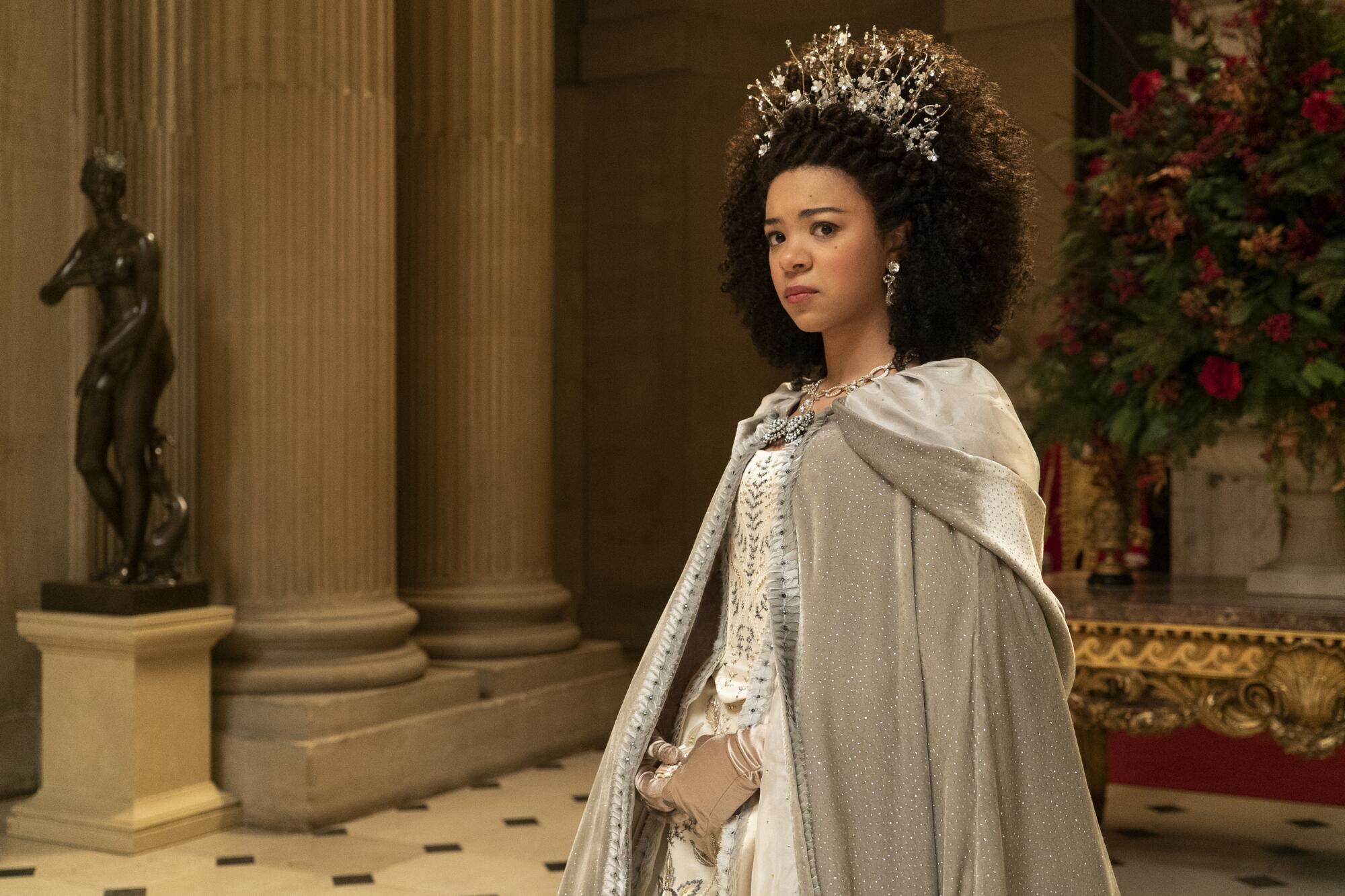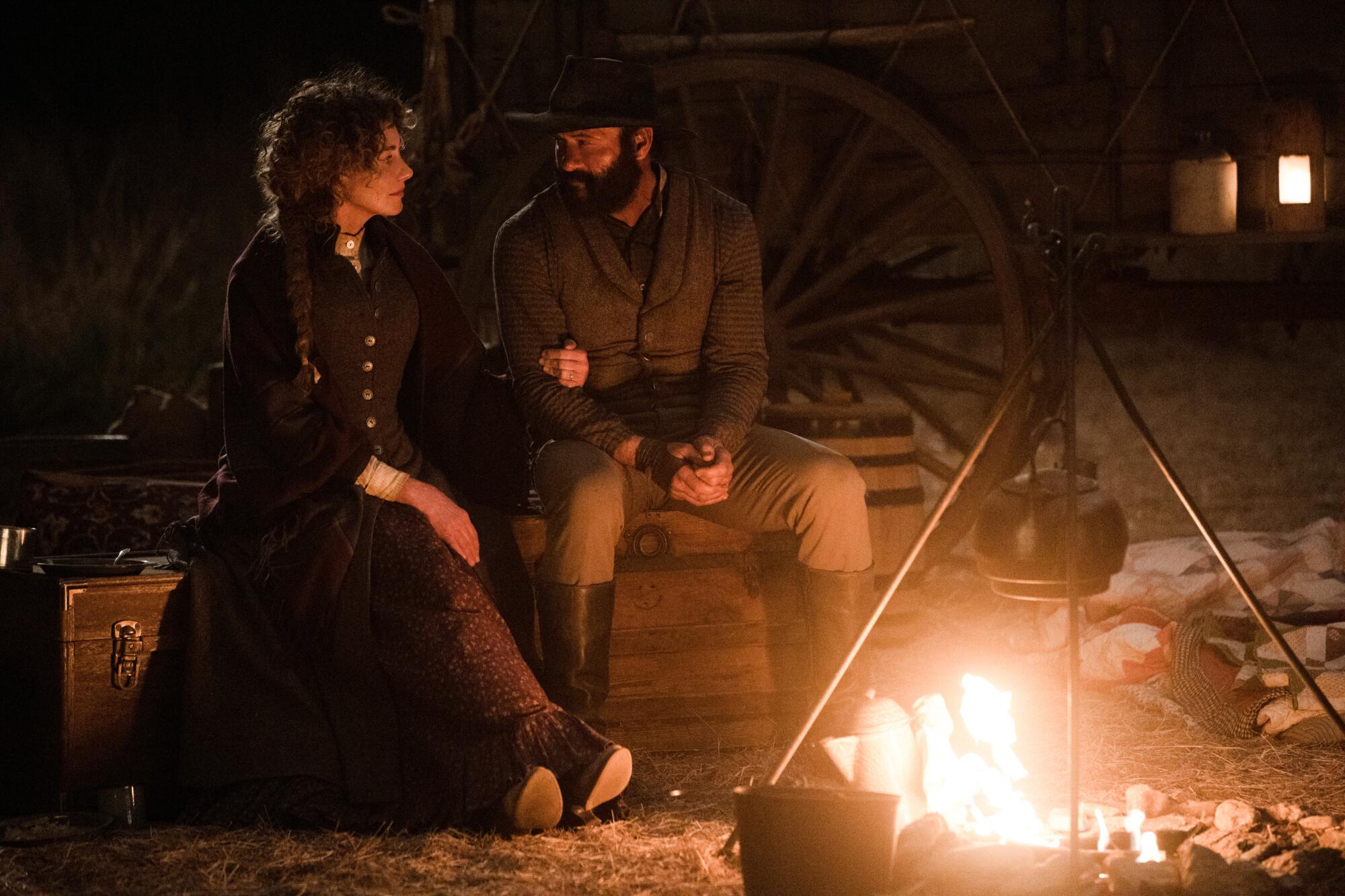
For a minute there, a few years back, it seemed that Netflix was no longer content with upending the television industry. Instead, it seemed determined to consume it.
In a six-month span starting in the summer of 2017, the streamer lured two of TV’s most successful creators away from their longtime homes — first Shonda Rhimes, who left ABC for a $100-million, four-year deal; and then Ryan Murphy, who had built much of his career at FX, for a record-setting $300 million.
In this country, nothing indicates cultural importance more than cash, and seeing this much of it handed out to creators of television said as much about the state of the art as it did about Rhimes’ and Murphy’s success within it.
As others followed, however, including Kenya Barris, David Benioff and D.B. Weiss, and Barack and Michelle Obama, it began to feel a bit lunatic — where were all the hundreds of millions for those deals coming from, anyway? — and, frankly, a little sinister.
The complete guide to home viewing
Get Screen Gab for everything about the TV shows and streaming movies everyone’s talking about.
You may occasionally receive promotional content from the Los Angeles Times.
Did Ted Sarandos see himself as some modern-day John Galt, summoning the already wildly successful to a cinematic version of Ayn Rand’s Galt’s Gulch where they could work free from restrictions and “looter” mentality while the rest of civilization collapsed?
Would the sudden and glorious verdancy of television soon by clipped into submission by cryptic algorithms and shoved into an entrance-fee-demanding hot house where myriad species competed to the death for air and sun?
Well, no. Or rather, not exactly. The epidemic of nine-figure Netflix deals was replaced first by the COVID-19 pandemic, which shut down television production for almost a year, then by the (overdue) realization by Netflix and other streamers that they cannot computer-generate actual money and that a subscription-based economy has its limitations.
Now the spree has been halted, perhaps permanently, by a writers’ strike. You know, the one they’re calling “the Netflix strike.”
Turns out you can’t just pay a chosen few enormous amounts of money and expect a constant stream of scripted content; you need to pay the multitudes who write most of that content a fair wage as well.
Or they will all stop writing. Including the multimillionaires, because they too are part of a union. Rhimes has spoken out in support of the strike, telling a small crowd who gathered in May to celebrate her winning a special BAFTA “I am a striking writer.” She, Murphy and other highly compensated showrunners have been top donors to a strike relief fund.
No one is blaming or begrudging Murphy, Rhimes, Benioff and Weiss (though it would be nice to know when their version of “The Three-Body Problem” is going to premiere) or any other nine-digit dealmakers rewards for their success. (Although Barris apparently did not think $100 million was worth it; he opted out of his Netflix deal after only one year). The Writers Guild of America may be one of the strongest unions going, but no one gets into television, or any part of the entertainment industry, because of its socialist career structure.

A relative few have always made eye-popping amounts of money in show business while most everyone else — writers, actors, directors, cinematographers — struggle to maintain eligibility for their guild’s health insurance.
But changes in the industry, due in large part to the rise of streaming services with their DIY economics and lack of ratings transparency, have made that struggle ever more difficult for writers.
In that context, it’s hard not to question the thinking behind those enormous deals.
Netflix is far from the only entertainment platform, or streamer, to offer star creators big sums. See Taylor Sheridan’s burgeoning “Yellowstone” universe at Paramount+ or Greg Berlanti’s $400-million deal with Warner Bros. (which includes, but isn’t limited to, Max). Still, the 2017-18 spending spree that cherry-picked Rhimes and Murphy was a big swaggering statement of status and intent.
A statement that may have wound up doing more harm than good.
The “good” being the above-mentioned validation of TV as a force in the universe, and, thus far, four hit shows.
Amid a writers’ strike largely about the power of platforms, we take a snapshot of the streaming pecking order, from Netflix to (formerly HBO) Max.
The “harm” being a deep misunderstanding of how great television is made — rarely by one or two people and always in a system that allows people to earn while they learn — and a widening economic gap that already threatens this country and is damaging the entertainment industry.

Twenty years ago, the film industry faced a similar problem. Box office success was seen, at the time, as tied to a few big names; the enormous salaries and back-end deals commanded by those stars were paid, in part, by other actors who saw their quotes fall to scale plus 10 (the SAG minimum plus 10% for the agent’s fee).
Some, unable to afford the basic cost of living, left the industry. Others were able to hang on long enough to see the TV renaissance offer more and better opportunities. No one would argue that film, as an art form or a business, benefited from the prizing of the few to the detriment of the many. Indeed, as “big name” shifted to “big franchise,” one could argue it hastened the death of the movie star.
And now streaming has put television in a similar position. Not only have Netflix and other streamers attempted to corral big talent from other platforms, they are destroying the system that created those great talents in the first place.
For the last few years, all eyes have been on Murphy to see, on one hand, what $300 million could buy and, on the other, what he would do with the creative freedom offered by Netflix. By either standard, the results have been mixed.

No one will ever accuse the man of being lazy or boring; there is literally a “Ryan Murphy Collection” available on the streamer, which includes two documentaries (“A Secret Love” and “Circus of Books”), three feature films (“Mr. Harrigan’s Phone,” “The Prom” and “The Boys in the Band”) and six, count ‘em, six series (“The Politician,” “Hollywood,” “Halston,” “Ratched,” “The Watcher,” “Dahmer–Monster: The Jeffrey Dahmer Story.”)
Though ”The Politician” and “Hollywood” benefited from Ryan-does-Netflix anticipation, the reviews and audience reception were not great. And not even the high-wattage talent of Meryl Streep, Ewan McGregor and Sarah Paulson could save “The Prom,” “Halston”and “Ratched,” respectively.
But last year ”The Watcher” and “Dahmer” were hits, claiming the self-analyzed position of “most watched” shows on the streamer for many weeks; both have been renewed for a second season.
Rhimes gave the streamer just as many hits but much less content: the buzzy but divisive “Inventing Anna” and the wildly successful “Bridgerton” and “Queen Charlotte: A Bridgerton Story.” Last July, she extended her deal with Netflix — $150 million for five years.
Creatively, it’s easy to see why Rhimes chose Netflix: Romantic period dramas are not what ABC is known for. Less so for Murphy. The production values of “Hollywood” and even “The Politician” might have outstripped an FX budget, but both “The Watcher” and “Dahmer” would have been right at home next to “American Horror Story” and the various “Feuds” and “American Crimes.”
Where the conversation around them would have extended far beyond the few weeks in which the primary audience engaged in a collective binge. As a subscription service, Netflix is always about promoting Netflix, rather than any particular show.
After an explosion fueled by streaming, the rollback has hit animation hard. Creators from Netflix, (HBO) Max and more say it’s a Hollywood tradition.
No matter how good a show is on the streamer, it will never get the same kind of media or audience attention of weekly series like “Succession” or “Ted Lasso” for the simple reason that it is logistically impossible — something Netflix has tacitly admitted by experimenting with the weekly rollout of, say, unscripted hit “Love Is Blind.” (“Bridgerton” did take a page out of “Downton Abbey’s” book with “The Queen’s Ball: A Bridgerton Experience.”)
Maybe that’s part of what all the money is for. The audience for any Netflix series is virtually unknowable. The output from a $300-million deal is not.
The writers’ strike, however, suspended all of these deals. Indeed, many people in the industry have suggested that the Alliance of Motion Picture and Television Producers forced the strike in order to bail on those they are no longer happy with, potentially using a force majeure clause that would allow them to end any or all of the suspended deals — to reset the ledgers.
To the bean counters among us, that could seem like a solution, but it’s only a reset if it allows the studios and platforms to address the systemic problem.
No one believes that fair payment of one tier of writers should come at the expense of another, and compared with what some streaming executives make, even Murphy’s deal is peanuts. But winning all the best marbles isn’t going to help you much if you manage to destroy the factory that made the marbles in the first place.
More to Read
The biggest entertainment stories
Get our big stories about Hollywood, film, television, music, arts, culture and more right in your inbox as soon as they publish.
You may occasionally receive promotional content from the Los Angeles Times.














